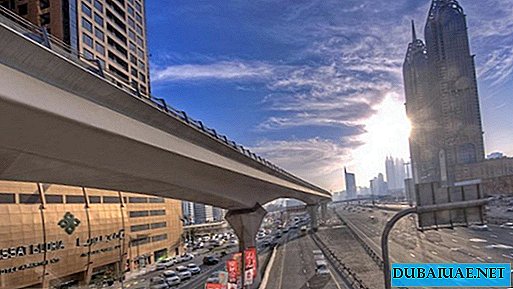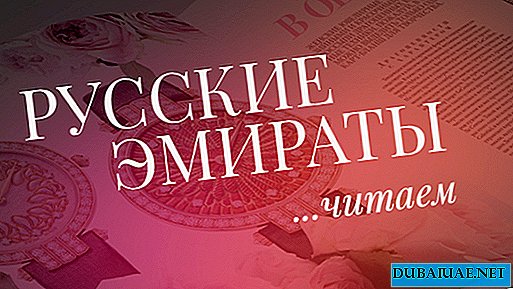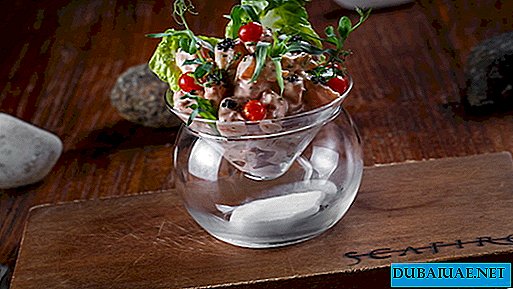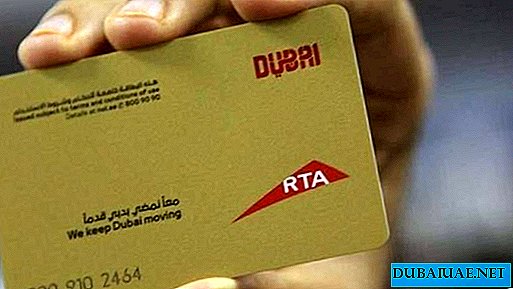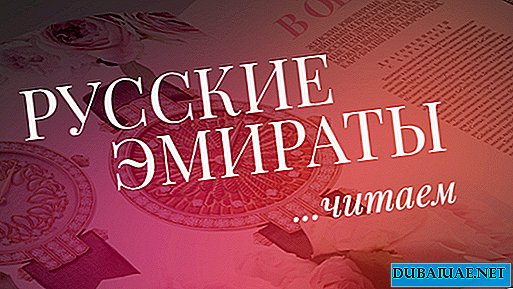 One well-known Russian glossy magazine, talking about Dubai, mentioned that all the cultural and historical places of the emirate can be circumvented in half an hour.
One well-known Russian glossy magazine, talking about Dubai, mentioned that all the cultural and historical places of the emirate can be circumvented in half an hour.
My story about the old district of Bar Dubai - Bastakia is designed to refute this statement, proving that even half a day is not enough for just one place that is amazing in its beauty and comfort. When the great boom of global construction began, many houses in Bastakia were destroyed in order to make way for municipal construction. But the state structures that were glad for the preservation of the historical heritage caught on in time, stopping the process of destruction of ancient monuments, organizing the protection and reconstruction of ancient buildings.
Having crossed the Dubai Creek Bay over Maktoum Bridge to the old-city part of Dubai, it is as if you are in another temporary dimension. A faint ripple from a warm breeze sways on your right hand on the azure water surface, and painted wooden schooners-dhows moor to the shore. On the left, the labyrinths of narrow streets leading to the existing mosque intertwine with an intricate pattern. It's funny that before entering the Muslim temple you can see not only a lot of the most varied shoes, bicycles and prayer rugs, but also baby strollers, three-wheeled bicycles and even a swing!
A roundabout with a fragrant "flower clock" in the center symbolizes the connection of time. From the car park you immediately go out to the reed hut, the walls of which are hung with old maps, historical documents. In the center of the main wall is a giant, decrepit black and white photograph showing everyone entering what Bastakia looked like from a bird's eye view at its best. Graduated Arabian men sit on soft pillows, impressively puffing with a gurgling fruit "shisha". The story begins with them and continues with them.
After customs duties were unreasonably high in 1902, Iranian merchants began to settle and settle in the area of Dubai's duty-free trading harbor, choosing the west coast of the bay for construction. The name of the southern Persian region of Bastak, which they brought with them from their homeland, has taken root. The settlement was built and expanded; aliens from Persia developed trade both with their native country and with India; not without their participation was opened and oil trade. The Bastakians received full rights in 1971, when the United Arab Emirates was founded - they were recognized as full citizens of the UAE and became owners of the country's passports with all the attendant advantages.
 The wind towers, or, as the locals called them, the “bargil,” did not immediately take their rightful place. Initially, they were preceded by reed huts, blown by the wind from all sides. Several of these huts are still left as exhibits of the open-air museum - Bastakia. Such light buildings, open to all winds, were very common throughout Dubai. But such housing was temporary and did not give hope for stability and confidence in the future. It was then that the “wickers” were replaced by serious structures with a foundation of brick-clay batch, with walls of coral stone and lime slabs.
The wind towers, or, as the locals called them, the “bargil,” did not immediately take their rightful place. Initially, they were preceded by reed huts, blown by the wind from all sides. Several of these huts are still left as exhibits of the open-air museum - Bastakia. Such light buildings, open to all winds, were very common throughout Dubai. But such housing was temporary and did not give hope for stability and confidence in the future. It was then that the “wickers” were replaced by serious structures with a foundation of brick-clay batch, with walls of coral stone and lime slabs.
The bargil towers, competing in height with the minarets of mosques, served to ventilate and cool the living quarters in the houses. These structures were caught even by the slightest breeze and directed it down into the interior of the house. In winter, the room was thoroughly blown through, so the base of the tower was sealed with a wooden partition until the warm season.
Once, in the recent past (1990), an American dentist Michael Ziegler rented an old abandoned dilapidated house with a wind tower from the owner-Arab in Bastakia in order to restore it and use it for living, having only a minimum of necessary communications. The restoration project included a change in wiring, water supply, restoration of a balcony, masonry and ceilings using traditional materials. Today, the living house-museum No. 28 represents the pinnacle of Arab restoration work, testifying to Michael's care. Municipal authorities continue a good tradition of supporting historical heritage by repairing and rebuilding buildings in Bastakia.
In buildings - monuments of history and culture, the society of philatelists, the association of journalists, the natural fund, the museum, the art gallery and lovely cozy coffee houses and restaurants are now located. The courtyards of such cafeterias attract many tourists, offering the idle audience to relax in the shade of the old walls in wicker chairs, enjoying the tart smells of bright colors and the fragrant aroma of Arabic coffee, watch private art exhibitions and buy some trinkets in the "antiquities". The old city is especially beautiful after sunset: a special illumination mounted directly in the Bastakia bridge illuminates with mysterious reflections and recently restored sides of the houses and the remaining six-hundred-meter fragment of the city wall, located right in the center of the district. In the old days, a gypsum-coral wall encircled Al Fahidi Fort, a mosque and residential buildings, being a kind of border of the city.
Twilight descends onto the bay, bright city lights drop multicolored glare onto the water, boats quietly sway at the pier - Bastakia lives its own so new and so old life ...
Elena Balina


